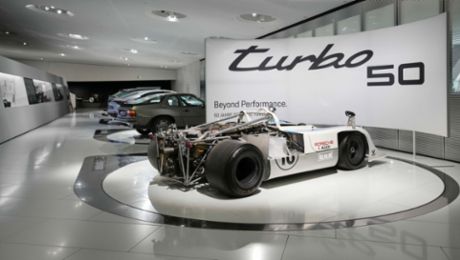Anyone looking into Porsche racing successes from the last century will automatically come across Norbert Singer. As a visionary racing engineer and master of aerodynamics, he played a role in every overall victory for Porsche at Le Mans from 1970 to 1998 – from the 917 to the 911 GT1 '98. On 16 November 2024 he celebrates his 85th birthday. “We would like to wish Norbert Singer all the best and we thank him for his tireless commitment to the Porsche brand,” says Michael Steiner, Member of the Executive Board for Research and Development. “He contributed to the success of the brand in motorsport not only as a project manager in Weissach, but also with his strategic and tactical decisions at the racetrack.”
Career as a racing engineer in the development department
Norbert Singer was born on 16 November 1939 in what was then known as Eger, now Cheb in the Sudetenland, in the westernmost region of the Czechia. In Munich, he studied for a degree in mechanical engineering with a focus on aerospace and automotive engineering, graduating as an engineer. In March 1970, he began his career as a racing engineer in the development department of Porsche, hired by Peter Falk, who was head of predevelopment and racing car development in testing and also test manager in series production development. Singer’s passion for motorsport was not a new one: as a student he had followed races at the Nürburgring and at the Grand Prix in Monaco.
His first year at Porsche was also the year of the long-awaited first overall victory at Le Mans. Right after starting in Weissach he set to work on the gearbox cooling system of the Porsche 917 short-tail, in which Richard Attwood and Hans Herrmann took first place at the Circuit de la Sarthe just a few weeks later. Head of development Ferdinand Piëch asked Singer to come up with a simple solution to take the place of an external oil cooler, which would have generated additional wind resistance. After the triumph at the 24-hour race, he dedicated himself to the aerodynamics of the 917, later optimising the 917 long-tail, the 917/10 and the turbocharged 917/30. Over more than three decades as a project manager, he prepared many cars for the racetrack and then provided on-site support for those cars, which included the: 911 Carrera RSR, 911 Carrera RSR Turbo 2.1, 935, 935/78 “Moby Dick”, 924 Carrera GT, 924 GTP Le Mans, 956, 962, 911 Turbo S Le Mans GT, 962 Dauer Le Mans GT, and the 911 GT1.
Highlights of his career
Among the highlights of his career were the development of the 956 Group C car and its successor, the 962. With the 956, Porsche pioneered an aluminium monocoque that enabled the racing car to achieve what is known as the ground effect, thanks to a special underbody design featuring air ducts. “The faster the cars went, the more they literally stuck to the asphalt,” Singer recalls. From 1982 to 1986, the 956 and 962 C models achieved seven overall victories at Le Mans and won five drivers’ world championships, three manufacturers’ world championships and two team world championships. Between 1984 and 1991, a version of the 962 achieved many victories in the American IMSA race series.
Since retiring in December 2004, Singer has acted as a contemporary witness at the Porsche Museum. He is a frequent guest at the Porsche company archives and was involved in the preparation of a book on the history of the 956/962, among other projects. He also shares his expertise during the restoration of racing cars. To this day he has a close relationship with the brand.

